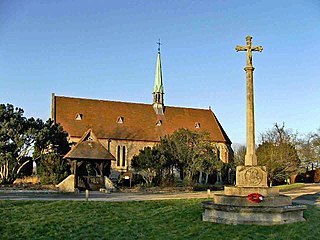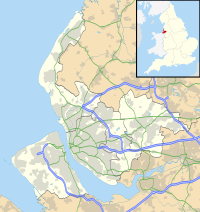
Victoria University is a federated university, which forms part of the wider University of Toronto. Affiliated with the United Church of Canada, the university was founded in 1836 as a college in the Wesleyan Methodist tradition.

Monticello was the primary plantation of Thomas Jefferson, a Founding Father and the third president of the United States, who began designing Monticello after inheriting land from his father at age 14. Located just outside Charlottesville, Virginia, in the Piedmont region, the plantation was originally 5,000 acres (20 km2), with Jefferson using the labor of African slaves for extensive cultivation of tobacco and mixed crops, later shifting from tobacco cultivation to wheat in response to changing markets. Due to its architectural and historic significance, the property has been designated a National Historic Landmark. In 1987, Monticello and the nearby University of Virginia, also designed by Jefferson, were together designated a UNESCO World Heritage Site. The current nickel, a United States coin, features a depiction of Monticello on its reverse side.

Liverpool is a Canadian community and former town located along the Atlantic Ocean of the Province of Nova Scotia's South Shore. It is situated within the Region of Queens Municipality which is the local governmental unit that comprises all of Queens County, Nova Scotia.

Aigburth is a suburb of Liverpool, England. Located to the south of the city, it is bordered by Dingle, Garston, Mossley Hill, and Toxteth.

Broomhill and Sharrow Vale — which includes the districts of Broomhill, Broomhall, Crookesmoor, Endcliffe, Sharrow Vale and Tapton Hill — is one of the 28 electoral wards in City of Sheffield, England. The ward was created following the 2015 local government boundary review out of parts of the old Broomhill, Central and Nether Edge wards. It is located in the western part of the city. The population of the Broomhill ward in 2011 was 16,966 people in 5,708 households, covering an area of 2.7 km2. Broomhill & Sharrow Vale is one of the wards that make up the Sheffield Central Parliamentary Constituency.

Mossley Hill is a suburb of Liverpool and a Liverpool City Council ward. Located approximately 3.5 miles south east of Liverpool City Centre, it is bordered by Aigburth, Allerton, Childwall, Garston and Wavertree. At the 2001 Census, the population was 12,650, increasing to 13,816 at the 2011 Census.

The Old Dock, originally known as Thomas Steers' dock, was the world's first commercial wet dock. The 3+1⁄2 acres (1.4 ha) dock was built on the River Mersey in Liverpool, England, starting in 1710 and completed in 1716. A natural tidal pool off the River Mersey, which probably gave its name to Liverpool centuries earlier, was partially filled and locked in from the river with quay walls erected.
The Berkeley Student Cooperative (BSC) is a student housing cooperative serving primarily UC Berkeley students, but open to any full-time post-secondary student. The BSC houses and/or feeds over 1,300 students in 17 houses and three apartment buildings. Food is provided to residents of the 17 houses, which also offer boarding meal plans to non-residents. As part of their rental agreement, residents of the houses are required to perform workshifts, typically five hours per week. The BSC is led by a board of directors which is primarily composed of and elected by student members.

Bayford is a village and civil parish in the East Hertfordshire district of Hertfordshire, England. According to the 2001 census it had a population of 435, increasing to 466 at the 2011 Census. The village is about three miles south of Hertford, and is served by Bayford railway station.

The history of Liverpool can be traced back to 1190 when the place was known as 'Liuerpul', possibly meaning a pool or creek with muddy water, though other origins of the name have been suggested. The borough was founded by royal charter in 1207 by King John, made up of only seven streets in the shape of the letter 'H'. Liverpool remained a small settlement until its trade with Ireland and coastal parts of England and Wales was overtaken by trade with Africa and the West Indies, which included the slave trade. The world's first commercial wet dock was opened in 1715 and Liverpool's expansion to become a major city continued over the next two centuries.

Arrowe Park is an area 6.5 km (4.0 mi) to the west of Birkenhead, within the Metropolitan Borough of Wirral, Merseyside, England. It is situated on the Wirral Peninsula, adjacent to the Woodchurch housing estate and to the south of the large village of Upton. The location has two landmarks: Arrowe Park Hospital and Arrowe Country Park, along with a number of residences.
Liverpool College is a school in Mossley Hill, Liverpool, England. It was one of the thirteen founding members of the Headmasters' Conference.
Halls of residence at the University of Bristol are generally located within three distinct areas of Bristol, the City Centre, Clifton and Stoke Bishop.

Housing at the University of Chicago includes seven residence halls that are divided into 48 houses. Each house has an average of 70 students. Freshmen and sophomores must live on-campus. Limited on-campus housing is available to juniors and seniors. The university operates 28 apartment buildings near campus for graduate students.
John Dawson was a Liverpool slave trader.

Peter Baker (1731–1796) was an English slave trader. He formed the Liverpool slave trading company Baker and Dawson with his son-in-law John Dawson. In the period between 1783 and 1792, Baker and Dawson was the largest company of slave traders in England. They had an exclusive contract with the Spanish government to supply enslaved people to the Spanish colonies. In 1795, he became Mayor of Liverpool.
Walton Hall was a 17th-century historic country house, set in a 300-acre (1.2 km2) estate, which was demolished in the early 20th century. Sometimes referred to as Walton Old Hall, it was situated at the centre of the Walton Hall Park in Walton, Liverpool. Its former residents were Liverpool merchants and the last two families to reside at Walton Hall profited from the Atlantic slave trade. In the 19th century it was the home of Thomas Leyland during his second and third term as Lord Mayor of Liverpool.
Carnatic, launched in 1770, was an East Indiaman belonging to the French East India Company. A British letter of marque captured her in 1778. She became a transport. She was wrecked in 1781.
Mentor was launched in 1778 at Chester as a West Indiaman. She captured three vessels, including a valuable East Indiaman belonging to the French East India Company. She had an inconclusive single ship action with a French warship in 1779. She was wrecked in 1782.














